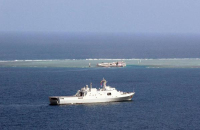WESTERN countries commonly proclaim the great benefits of free trade and the evils of protectionism.
Globalization Of Trade Without Globalization Of Law Results In Plutocratization. This Is Exactly What Happened To The Roman Republic, & Why It Faltered
In reality, many developed countries practise double standards, insisting on free trade in areas where they are strong, whilst using protectionist measures in sectors where they are weak.
In the worst case, within the same sector they have designed rules that impose liberalisation on developing countries but allow themselves to maintain high protectionism.
An outstanding example is in agriculture, in which the rich counties are not competitive.
If “free trade” were to be practised, a large part of global agricultural trade would be dominated by the more efficient developing countries.
But until today, agricultural trade is dominated instead by the major developed countries.
For many decades they got an exemption for agriculture from trade liberalisation rules.
This exemption ended when the World Trade Organisation (WTO) was created in 1995 and the rich countries were expected to open their agriculture to global competition.
But in reality, WTO’s agriculture agreement allowed them to have both high tariffs and high subsidies.
The subsidies have enabled farmers to sell their products at low prices, often below production cost, yet allowed them to get adequate revenues (which include the subsidies) that keep them in business.
This has four negative effects on developing countries.
Firstly, those countries that are agriculturally competitive cannot penetrate the rich countries’ markets.
Secondly, the developing countries are deprived of other markets because the United States and Europe can export the same farm products at artificially cheap prices. This is a complaint of African cotton-producing countries.
Thirdly, by exporting a product cheaply, the developed country reduces the demand for a competitor substitute product. If the US did not subsidise its soybean, enabling soybean oil to be cheaper, Malaysian or Indonesian palm oil would have a bigger market.
Fourthly, these cheap products (such as chicken from US and Europe) have entered many developing countries, damaging the livelihoods of their local farmers.
In 2001, the WTO launched a Doha development agenda whose chief goal was to liberalise the agriculture of developed countries.
Much energy was spent over many years to devise methods and formulae to liberalise agricultural trade, and a high degree of consensus was reached.
However, the US, backed by Europe, has now made it clear they do not intend to conclude the Doha Round.
Future WTO negotiations have to be on a new basis, and not based on existing texts.
An article by Chris Horseman in the bulletin Agra Europe (May 12) analysed why the US now cannot accept the existing text.
A reduction in the maximum limit of one type of allowed subsidies (called de minimis) would have pushed the US to increase by 58% another type of disallowed subsidies (known as AMS).
This partly explains “why the US is keen to move away from the formulae on the table and to negotiate a fresh approach,” said the article.
Due to its powerful farm lobbies, the US will not change its domestic policies (embodied in its 2014 Farm Bill) to meet the Doha agenda’s new limits on the allowed amounts of domestic subsidies.
The same article also shows how the European Union has meanwhile changed the types of subsidies it provides, in order to better comply with WTO rules. This also allowed the EU countries to maintain their total domestic subsidies at around €80bil (RM356bil) annually from 2004 to 2013.
Two decades after the WTO was set up, the rich countries have continued the high level of their agricultural protection.
There is little prospect that they will agree to changes in the trading system that will effectively eliminate or reduce the massive subsidies that keep their farming systems afloat.
The poorer countries simply do not have the money to match the subsidies of the rich.
If they want to defend their farmers and their food security, they can only put up tariffs to levels that keep out the cheap subsidised products.
But those developing countries that sign free trade agreements with the US and the EU have to cut their agriculture tariffs to zero or very low levels.
At the same time, at the insistence of developed countries, agricultural subsidies are kept off the FTA agenda. Thus, the rich countries can keep their subsidies and swamp developing countries with their farm products.
The US and EU are also taking protectionist measures in other areas against developing countries.
For example, the US successfully filed a case against India at the WTO, that the latter’s National Solar Mission favours local firms through its domestic content requirements for solar cells and modules.
This kind of objection makes it extra difficult for India or other developing countries to take action against climate change.
The European Parliament recently voted to refuse giving China the status of a market economy in the WTO, although WTO members are obliged to recognise China as a market economy by December 2016, 15 years after it joined the WTO in 2001.
By denying China this status, it is easier for other countries to succeed when taking anti-dumping cases against China, and thus to place extra tariffs on Chinese exports.
China and India are fighting back.
India last week announced it will file 16 cases against the US for violating WTO rules when providing subsidies under its renewable energy programmes.
China won a case against the US in the WTO for wrongly imposing countervailing duties against 15 Chinese products including solar panels, steel sinks and thermal paper.
However, the US has not complied with the panel decision to withdraw the duties, and China is now starting action at the WTO to get the US to comply.
It seems impossible to prevent or reduce the rich countries’ high protection of their agriculture. And it also seems they will continue using protectionist measures against products or policies of developing countries.
There is indeed a big gap between the rhetoric and practice of free trade.

By Martin Khor Global trends
Martin Khor (director@ southcentre.org) is executive director of the South Centre. The views expressed here are entirely his own.
Related:
























